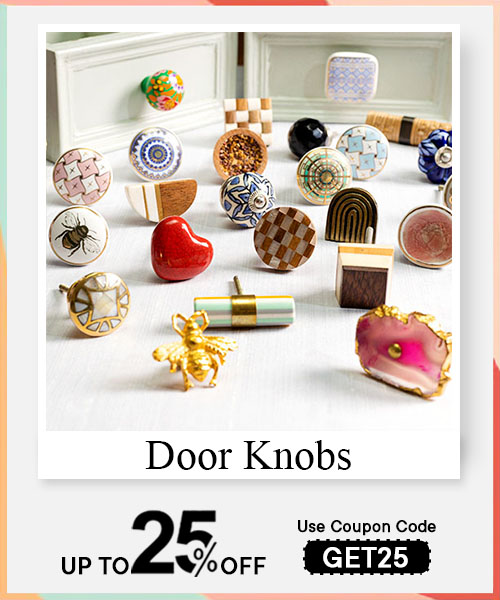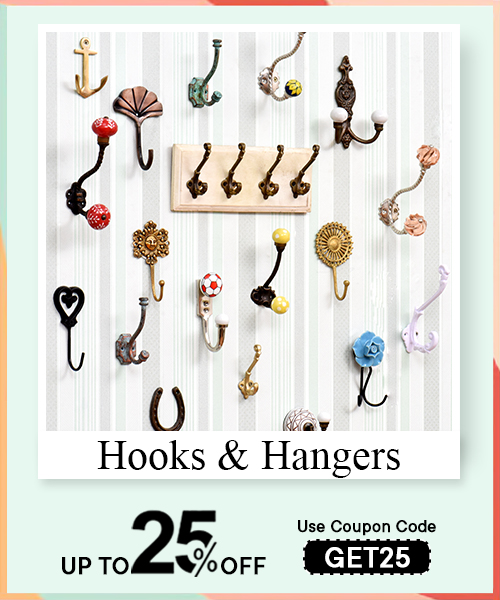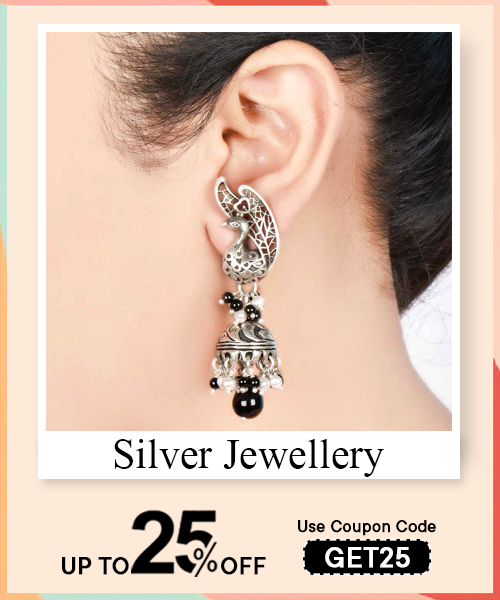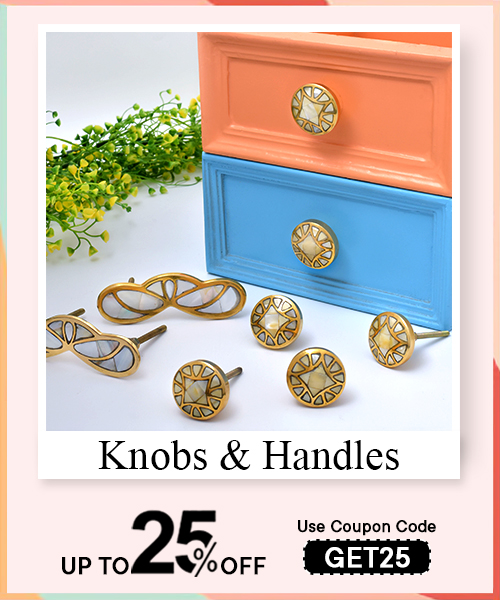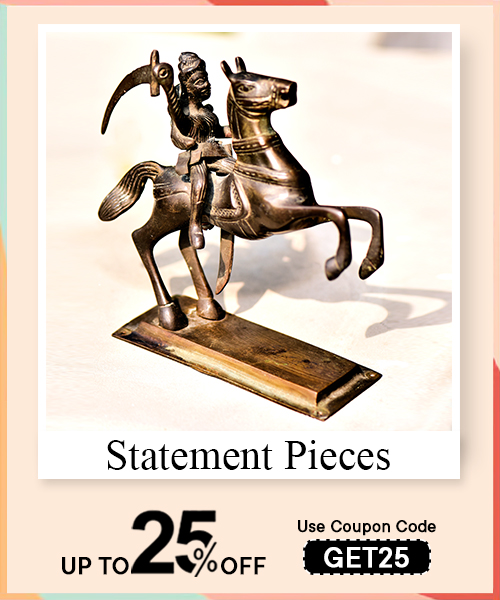Pastel painting exists in a unique niche between visual immediacy and tactile vulnerability. Unlike the fluid sweep of watercolor or the viscous density of oil, pastels offer raw pigment suspended in minimal binder, held together in a stick that mimics the directness of drawing while inviting painterly gesture. The medium demands both precision and spontaneity. It allows artists to build soft transitions, layer vibrant tones, and exploit the dry texture to create subtle atmospheric depth. Its fragility, the chalky bloom, and powdery surface become part of the aesthetic identity. Pastel painting isn’t merely a technique; it is a visual language where texture becomes voice and color its breath.
Pastels differ fundamentally in material composition and application. Unlike oil paint, which relies on linseed oil as a binder and requires brushwork, pastels are composed of pure powdered pigment mixed with a minimal binder, giving them their dry, velvety texture. Watercolor flows and bleeds with water, requiring control over transparency and wash, while pastels rely on direct pressure, hand-blending, and layering to build intensity. The immediacy of pastel allows for spontaneity without drying time, which oil paint often restricts. There is no waiting, what you apply is what you get. Moreover, pastel doesn’t crack, yellow, or change tone with age, unlike oil. However, it is more susceptible to smudging and must be preserved under glass. This medium blends the tactile engagement of drawing with the chromatic intensity of paint, making it a singular tool for expressive, layered surface treatments that other wet mediums rarely allow.
Pastel is often labeled a hybrid medium because it encompasses the techniques and gestures of both drawing and painting. Artists hold pastel sticks much like a pencil or charcoal and apply marks directly onto the surface akin to drawing. Yet, the rich pigmentation, ability to layer, smudge, and build opacity resembles the sensorial experience of painting. You’re not merely outlining or shading; you’re shaping space with color. This duality enables artists to sketch with painterly confidence or paint with the intimacy of a drawing hand. Pastels also allow varied applications from hatching and cross-hatching to scumbling and feathering, mimicking brushstrokes in dry form. This structural ambivalence gives pastel work a liminal quality neither fully one nor the other. It's in this in-between space that pastel finds its creative strength gestural yet composed, precise yet free-flowing.
Pastel paintings straddle the threshold between fine art and illustrative traditions and the classification often depends on context, intent, and execution. In galleries and art history, pastels have long held fine art status. Think of Degas’s ballet dancers or Rosalba Carriera’s Rococo portraits where pastel becomes a language of elegance and immediacy. Its capacity to express mood, texture, and tonality makes it suitable for high art. Yet, because of its portability, quick application, and luminous clarity, pastel has also been used extensively in illustration and commercial sketches. The art world no longer draws rigid lines. Many contemporary pastel works, especially when layered and conceptually rooted, are shown alongside oil and acrylic in fine art settings. It's not the medium but the mastery, originality, and thematic depth that determine its standing. Therefore, pastel painting can be both a whispering sketch or a monumental visual statement.
Pastel, with its powdery matte texture and immediacy of pigment, has danced across centuries from courtly Rococo salons to the introspective sketches of Impressionist masters. It emerged not merely as a medium but as a stylistic voice, raw, subtle, and expressive. Unlike oils that invite layering, pastels thrive on spontaneity, allowing the artist’s touch to remain alive and tactile. From the dainty elegance of 18th-century portraiture to the structural fragmentation of Degas’ ballet compositions, pastel evolved with shifting aesthetic sensibilities. Its timeline is not just historical, it's emotive, deeply tied to the hand’s gesture and the era’s cultural temperament.
Pastel painting began to assert its identity during the late 15th and early 16th centuries, though it was initially used more for preparatory studies than as a finished medium. Artists like Leonardo da Vinci experimented with chalk and powdered pigments, setting a groundwork that would later evolve into what we recognize today as pastel. The true emergence of pastel as a legitimate artistic medium occurred during the Renaissance when the quest for lifelike realism demanded tools that could deliver both precision and softness. It gained momentum particularly in 17th-century France and Italy where artists sought new textures for portraying skin tones and delicate fabrics. With its portability and vibrant immediacy, pastel quickly became favored in portraiture and interior decoration. As it evolved, pastel reflected not just technique but class, the tool of aristocrats, thinkers, and observers capturing the world in strokes of whisper-soft color.
The evolution of pastel owes much to a few key visionaries. Rosalba Carriera, an 18th-century Venetian artist, elevated pastel from drawing-room diversion to high art. Her luminous Rococo portraits introduced a softness and intimacy that became synonymous with the medium. Later, Jean-Baptiste Perronneau and Maurice Quentin de La Tour refined its use in courtly French portraiture. Yet it was Edgar Degas in the 19th century who revolutionized pastel’s potential. His dancers, rendered in sweeping smudges and broken contours, exemplified how pastel could capture movement, mood, and modernity. He layered pastels with fixatives, transforming fragile marks into bold gestures. Mary Cassatt also innovated, using pastels for domestic intimacy and maternal tenderness. These artists not only defined pastel’s trajectory, they challenged its fragility, making it robust, resonant, and rebellious.
During the Renaissance, pastel existed primarily as a sketching or preparatory medium. Artists favored it for its immediacy and tonal precision, but it lacked the status of oil or fresco. However, by the Rococo period in 18th-century France and Italy, pastel exploded in popularity, especially among portraitists catering to aristocracy. In this ornate era, marked by elegance and emotional delicacy, pastels became the ideal medium to render powdered wigs, rosy cheeks, and opulent fabrics. Artists like Carriera and de La Tour used it to emphasize texture, softness, and the luminescence of human skin, creating portraits that almost breathed. The technique involved hatching, layering, and careful blending, often on toned paper that enhanced contrast. Pastel wasn't just a tool, it was a statement of refinement, intimacy, and the cultural aesthetics of leisure and grace that defined the Rococo sensibility.
Read More : Understanding Ink Wash Paintings (Sumi-e): Techniques, Meaning, and Cultural Significance
Pastel painting is rooted in the texture of its materials, soft pastels, hard pastels, and oil pastels, each offering a unique touch, opacity, and layering potential. Soft pastels are buttery and vibrant, ideal for blending and painterly effects, while hard pastels are great for detailing and underdrawings. Oil pastels, more resistant to smudging, bring a creamy, almost impasto finish. Essential tools include fixatives for preservation, pastel-specific paper with tooth to grip pigment, and drawing boards to stabilize the work. Artists also use blending tools like tortillons or fingers and kneaded erasers to mold light and shadow, all contributing to tactile visual drama.
To begin pastel painting you’ll need a basic set of soft pastels and hard pastels. Soft pastels provide rich pigment for blending and painterly strokes while hard pastels offer precision for sketching and detailing. Oil pastels are optional for artists seeking more textural bold expression. A good surface preferably sanded or textured pastel paper is vital as it holds the pigment without additional binding. Fixatives especially workable ones are essential to protect layers without distorting them. Tools like kneaded erasers for lifting pigment blending stumps for gradients and clips or a drawing board to secure the paper complete your starter kit. The tactile nature of pastels allows artists to blend directly with fingers making the medium both intuitive and intimate. The materials selected influence texture color depth and overall control foundations that shape an artist’s visual voice in pastel work.
The ideal paper for pastel work is textured acid-free and capable of gripping pigment without smearing or over-saturating. Papers like Canson Mi-Teintes Pastelmat and UART Sanded Paper are among the most respected. Canson offers a classic texture with visible tooth perfect for layering and soft blending. Pastelmat’s velvet-like surface enables smoother transitions and holds multiple layers without fixatives. Sanded papers like UART come in grits (e.g. 400 to 800) offering more control over how much pastel the surface retains ideal for advanced layering and scumbling techniques. Color-toned paper adds mood and tonal harmony from the first stroke. Weight matters too heavier papers resist warping. Ultimately the paper becomes a collaborator not just a canvas its tooth tone and grain defining the depth and delicacy of pastel marks. Your chosen paper can amplify contrast define form and dictate the emotional temperature of the finished piece.
Fixatives serve both as protectors and modulators in pastel painting. They chemically bind the loose pigment to the paper reducing smudging and safeguarding against dust or moisture. There are two types workable fixatives which allow you to layer over the sprayed surface and final fixatives that lock in the artwork. Applied incorrectly however fixatives can alter color vibrancy dull highlights and flatten the luscious texture pastel is known for. Spraying must be done lightly and evenly from a distance in layers. Overuse risks saturation while underuse risks fragility. Archival-quality fixatives with UV protection also help preserve hue integrity. Importantly not all papers and pigments respond the same testing on scraps is key. Fixatives ensure a pastel artwork’s survival without framing under glass immediately allowing the artist to control the image’s lifespan. But their role is alchemical used well they’re invisible used poorly they can dim the spirit of the art.
Pastel painting isn’t merely a medium it’s a tactile dialogue between pigment and surface. Artists often employ a variety of techniques that allow expression through depth, texture, and tonal control. The core styles blending, layering, scumbling, feathering, and underpainting define the visual vocabulary of pastel creation. Each stroke is deliberate, each smudge a whispered transition. Tonal harmony emerges from repeated layering, where colors evolve rather than merely appear. The artist builds the image the way time builds memory softly, patiently, with detail laid over detail. Whether capturing a melancholic dusk or a spirited portrait, pastels translate emotion through touch. Every technique is less about method and more about the mood it renders. With soft pastels, chalky gradients bloom. With oil pastels, boldness takes over. It is in this space between the technical and the ephemeral that pastel art finds its most powerful voice.
The most commonly used pastel techniques blending, layering, scumbling, feathering, and underpainting form the bedrock of pastel artistry. Blending involves the soft merging of tones to create seamless transitions artists often use fingers, blending stumps, or soft cloths to achieve this. Layering builds dimension one hue laid delicately over another, enhancing depth and luminosity. Scumbling, the act of gently brushing a broken layer of pastel over another, introduces texture without fully covering the underlayer, adding complexity and contrast. Feathering mimics brushstrokes light, parallel lines that emulate motion or direction, often in hair or fabric. Underpainting sets the emotional tone early by establishing value and color structure before finer pastel work begins. These techniques aren’t siloed they interact, dance across the page, and speak to the artist’s intent. Used masterfully, they shift the work from a mere drawing into a living, breathing visual narrative.
Achieving smooth blending in pastels is less about erasure and more about respecting transitions allowing colors to merge rather than override. Artists begin with soft pastels, which are inherently powdery and ideal for smudging. Blending is often executed using fingers, cotton pads, or blending stumps each lending a different finish. But what makes blending smooth isn’t the tool alone it’s the pressure, direction, and layering. The artist applies multiple layers with light strokes, slowly introducing adjacent tones, creating tonal transitions without harsh edges. Some use toned paper to harmonize base tones across the piece. The key lies in restraint overblending can flatten the painting, while subtle blending retains vibrancy. Fixatives are often sprayed between layers to lock in pigment and prepare the surface for further refinement. Ultimately, smooth blending is about intimacy between color and gesture where hand and hue dissolve into each other.
Scumbling is a nuanced technique in pastel painting where a dry, broken layer of pigment is lightly dragged over an existing color without fully obscuring it. Unlike blending, which merges colors, scumbling allows the underpainting to peek through, introducing texture, energy, and visual tension. Artists often use the side of a pastel stick for this purpose, letting the gritty tooth of the paper catch fragmented bits of color. The result is an optical mixture your eye perceives a fused hue without actual pigment mixing. Scumbling is particularly effective in areas demanding atmospheric texture clouds, foliage, rust, or aged walls. It adds a painterly quality without erasing the spontaneous edge of the medium. Used sparingly, it evokes emotion. Used boldly, it defines structure. The essence of scumbling lies in controlled imperfection where the raw meets the refined in a single, whispering gesture.
Soft, hard, and oil pastels belong to the same pastel family but differ widely in texture, composition, application, and artistic effect. Soft pastels are the most pigment-rich, held together with minimal binder, giving them a velvety, chalk-like texture ideal for blending and smudging. Hard pastels, with more binder and less pigment, produce crisp, fine lines and are well-suited for detailed work and underdrawings. Oil pastels, unlike the dry media of soft and hard pastels, contain non-drying oil and wax, offering a creamy, crayon-like feel that doesn’t require fixatives. Their smooth application and resistance to smudging make them excellent for layering and bold expression. Each type offers distinct tactile and visual qualities. Choosing one depends on whether the artist seeks softness and blendability, defined linearity, or painterly richness. Understanding their structural and sensory contrasts helps in aligning the medium with artistic vision, texture, and narrative form.
The core distinction in pastel types begins with their composition. Soft pastels have a high pigment load and minimal binder, often gum arabic or methylcellulose, resulting in an intensely colored yet fragile stick that crumbles easily and offers soft, powdery textures. Hard pastels reverse this ratio, using more binder to produce denser sticks with sharper edges, enabling artists to execute finer details and cleaner lines. These are commonly made with the same materials but pressed tighter. Oil pastels on the other hand use non-drying oils and waxes as their binder, making them creamy and less dusty. They do not produce the dry powder finish of chalk pastels, instead offering a smoother, sometimes glossier finish. These compositional differences influence everything from how the pastels feel in hand to how they behave on paper, impacting layering, blending, and preservation techniques such as fixatives and varnishes. The binder-to-pigment ratio defines the personality of each pastel type.
Oil pastels and soft pastels deliver fundamentally different tactile and visual experiences due to their binder and pigment properties. Oil pastels with their oil and wax base glide onto surfaces in thick, creamy layers. They resist smudging, layer easily without fixative, and produce textures akin to oil painting, enabling impasto-like effects. Their vibrancy is sealed into the medium itself, giving an inherent luminosity. In contrast, soft pastels rely on minimal binder and are highly powdery. This makes them exceptionally blendable, ideal for gradients, tonal shifts, and atmospheric effects, but also prone to smudging, requiring fixatives to preserve the work. They produce a matte, velvety texture and allow for delicate layering, though excessive layering can cause flaking. Where oil pastels favor painterly, expressive mark-making, soft pastels invite gestural nuance and tonal complexity. Choosing between the two often depends on whether an artist prioritizes permanence and creaminess or subtle shading and ephemeral softness.
Artists should select pastel types based on stylistic goals, desired texture, and workflow preferences. Soft pastels are ideal when seeking tonal depth, soft transitions, and expressive layering, perfect for portraits, landscapes, and impressionistic works. Their powdery nature allows for delicate smudging and feathering effects. However, they demand a careful hand and a controlled environment due to their fragility and need for fixative. Hard pastels suit line-focused work like architectural drawings, detailed studies, or the underlayers of a mixed-media piece, offering precision without overpowering pigment. Oil pastels shine in bold, textured compositions; their creamy application makes them excellent for expressive, tactile works and mixed media where water-resistance or impasto effects are desired. They are also travel-friendly and less messy. Artists with a painterly instinct may lean toward oil pastels, while those who sculpt light and form through delicate gradients may prefer soft pastels. Ultimately, the subject matter, surface, and emotional intent guide the choice.

Pastel painting thrives on immediacy and emotional subtlety, making it an intimate medium for diverse subjects. Artists often gravitate towards landscape painting to capture transient light, weather patterns, and atmospheric moods with lush textures. Still life compositions benefit from pastels' ability to render both softness and edge, particularly in organic forms like fruit, drapery, or ceramics. Portraiture in pastels emphasizes the fleshiness and emotional resonance of the human face, while figurative art explores gesture, posture, and presence with fluid strokes. On the avant-garde end, abstraction emerges through layered textures, vibrant hues, and bold forms showcasing the medium’s versatility. Whether capturing realism or emotion, pastel’s tactile richness and vibrancy offer artists a distinct sensory language for thematic exploration.
The most beloved subjects in pastel art typically center around landscape painting, portraiture, and still life. Landscapes appeal due to pastels' responsive color blending, ideal for capturing the fleeting drama of skies, sunlight, or natural textures. Portraits are also popular as pastels allow skin tones to blend delicately, reflecting mood and realism through light modeling and layering. Still life subjects like flowers, bowls, or cloth draw pastelists who favor detailed surface observation and playful light manipulation. Figurative studies provide expressive opportunities through the depiction of bodies in motion or repose. Meanwhile, abstraction though less common is increasingly explored with artists using the medium’s direct application to build intuitive expressive compositions. What unifies all these choices is the medium's immediacy and ability to highlight gesture and tone with little to no preparatory work. Each stroke in pastel feels both spontaneous and permanent offering a raw honest visual language that artists across styles embrace.
Pastel portraits rely on nuanced layering, controlled blending, and thoughtful edgework. Artists begin with a light contour drawing, laying down basic proportions before introducing tonal underlayers in muted hues like ochre, sienna, or gray. Soft pastels are typically favored for skin textures their velvety feel ideal for rendering delicate tonal transitions on the face. Facial planes are sculpted through cross-hatching or feathered strokes allowing for depth in cheekbones shadows around the eyes and the soft gloss of lips. The richness of colors especially in cheeks eyelids and subtle undertones is carefully built with translucent layering. Details in the eyes hair and clothing edges are often tightened with harder pastels or pastel pencils. Fixative may be used lightly between layers but is avoided near final detailing to preserve chroma. The result is a lifelike texturally rich portrait that evokes the sitter’s mood and personality with the immediacy of touch and color.
Absolutely abstract art finds a natural ally in pastels due to their tactile expressive nature. Unlike oils or acrylics that rely on mixing mediums or drying time pastels offer immediate mark-making which encourages spontaneity. Artists often explore shape rhythm and emotional tone through gestures layering soft and hard pastels to create a textural interplay. Bold color blocks dynamic line work and color field techniques are common enhanced by the ability to smear hatch or scumble with fingers or blending tools. Fixative helps lock in layers allowing for additional buildup without muddiness. Artists may also exploit the tooth of the surface like sanded paper or textured boards to accentuate friction and depth. The grain and fragmentation within each stroke support the improvisational energy essential to abstract work. In essence pastels allow for a raw performative process where thought becomes form almost instantly making it a compelling medium for abstract exploration.
Pastels excel at rendering atmospheric depth a key feature in landscape art. Their immediacy lets artists capture the fleeting light of dusk the shimmer of water or the haze of distant mountains with lyrical softness. Sky gradients and natural transitions are effortlessly built through blending techniques such as feathering or finger-smudging. Artists often lay down broad strokes to block in sky or ground planes then refine details like tree bark grass blades or reflections with sharper pastel edges. The layering capabilities light over dark or vice versa allow for both spontaneity and revision especially on textured or toned paper. Pastels also invite plein air exploration they are lightweight portable and don’t require drying. The inherent vibrancy of pastel pigments echoes the brilliance of natural light making landscapes come alive. Whether used for realistic depictions or impressionistic interpretations the medium’s versatility and pigment strength make it ideal for portraying nature’s nuanced beauty.
Preserving pastel artwork is both a technical and emotional pursuit. It protects not just pigment but presence. Pastels are vulnerable due to their powdery texture and surface fragility, making conservation an active responsibility. Always handle with clean hands or gloves to prevent oil transfer and avoid direct contact with the painted surface. For long-term care, archival framing with acid-free matting is essential. This buffers the artwork from acidity and environmental pollutants. UV-protected glass shields against light damage and proper spacing ensures the glass never touches the pigment. Never spray fixatives carelessly as they can dull texture and mute vibrant hues. Instead, opt for professional consultation or subtle misting with archival fixatives when necessary. Regular dusting around not on the frame also prevents pastel dust resettlement. Each decision in cleaning and conservation should be deliberate like brushstrokes safeguarding an artist’s spirit long after the last mark is made.
To preserve pastel artworks effectively artists must embrace conservation as a core part of their creative practice. Unlike oil or acrylics pastels rest delicately on the surface without a binding medium which makes them prone to smudging fading and dust accumulation. The first step is to limit handling. Pastel surfaces should never be touched. Protective archival fixatives may be applied with extreme caution to stabilize pigments but overuse can compromise the visual texture and color integrity. Using acid-free paper as the base ensures longevity preventing yellowing or deterioration from acidic reactions over time. Store unframed work with glassine sheets or in archival portfolios to prevent dust transfer. When transporting keep the work flat avoiding any rolling or bending. Environmental control also matters. Avoid humid direct sunlight or fluctuating temperatures. Preservation is not just about protecting pigment but about prolonging its emotional and visual resonance treating pastel works with the same care as living breathing memory.
Framing a pastel painting is more than a presentation choice. It’s a preservation strategy. Because pastel particles sit loosely on the paper using regular framing techniques can cause irreversible damage. Begin with an acid-free mat to create a physical barrier between the artwork and glazing. This spacer prevents pastel dust from sticking to or smudging against the glass. The preferred glazing is museum-quality UV-protective glass which filters harmful rays without compromising visibility. Avoid acrylic sheets unless absolutely necessary as they build static and can pull pigment from the surface. Never allow the glass to touch the artwork directly. Instead of metal or untreated wood opt for archival-grade materials that do not off-gas or warp with age. If you’re working with particularly delicate layers consider sandwiching the piece in double matting or float mounting within a shadow box. A well-framed pastel becomes timeless. Its fragile strokes preserved beneath layers of precision and thoughtful separation.
Preventing pastel dust from settling requires both careful technique during creation and mindful post-process practices. Start by working vertically or at a slight tilt. This allows gravity to naturally carry excess dust away from the artwork rather than into its layers. Tap gently from behind instead of blowing on the surface as forced air scatters particles unpredictably. Use fixative sparingly between layers to lock in pigment though this should never replace structural techniques. When finished a glassine sheet or an acid-free protective overlay can serve as a temporary dust shield. Framing plays a major role. Always use a mat spacer or foam-core riser to catch fallen dust behind the mat edge rather than letting it rest visibly on the glass. In storage place artworks flat in dust-proof portfolios ideally in a climate-controlled environment. Ultimately the aim is to protect not just the visual surface but the layered memory pastel artworks gently hold within.
Read More : A Guide to Gouache Painting: Techniques, Tools, and Creative Uses
Modern pastel painting isn’t merely nostalgic. It’s a medium rediscovered. Once sidelined as an amateur’s tool or decorative filler, pastel is now embraced for its immediacy, vibrancy, and tactile texture. In contemporary contexts, pastel has reemerged with sophisticated edge, used for abstraction, hyperrealism, and psychological portraiture alike. The pigment-rich quality of soft pastels allows for bold strokes and whisper-like transitions, lending itself well to both large gallery canvases and intimate studies. Pastel revival has created new visual vocabularies within art fairs and curated exhibitions. Whether on archival paper or mixed media installations, pastel’s soft grain speaks a new language, deeply felt, quietly radical.
Contemporary pastel painting is viewed as a medium of rediscovered strength, no longer seen as secondary to oils or acrylics. The pastel’s ability to produce both expressive gesture and nuanced blending has attracted a generation of modern artists exploring the intersection of emotion, memory, and identity. Critics now celebrate pastel for its immediacy and physicality, how it captures touch, presence, and even absence. While traditional landscapes still exist, contemporary works often interrogate cultural narratives or psychological states. Textural expressiveness, color intimacy, and chromatic layering make pastel especially resonant in today’s emotionally intelligent art spaces. From boutique galleries to major retrospectives, pastel is a quiet storm reclaiming its place in contemporary visual discourse.
Yes, pastel artworks are increasingly present in major exhibitions and biennales worldwide. Institutions that once favored more “durable” media now curate pastel with the same reverence as oils or installations. Exhibitions such as Art Basel and The Armory Show have featured contemporary pastel work alongside new media, elevating its stature. Curators are drawn to pastel’s poetic softness and raw immediacy, qualities aligned with today’s demand for humanistic, tactile visual storytelling. Furthermore, pastel offers a compelling contrast in mixed media environments, often paired with photography, found objects, or digital projections. Its delicate surface and rich tonal vocabulary appeal to collectors seeking depth and craftsmanship in modern narratives.
Among contemporary pastel artists, names like Rosalba Pedrina, Wayne Thiebaud, and Brian Cobble surface repeatedly. Pedrina breathes emotion through portraiture using ephemeral pastel strokes. Thiebaud uses pastels to inject nostalgic charm and spatial vibrancy into everyday subjects. Emerging artists like Marianne Kolb reframe pastel with visceral abstraction, often layering over acrylic and mixed media for haunting effects. In India, artists such as Sujata Bajaj explore abstract spiritual symbolism through pastels. These artists elevate the medium by merging tradition with modern experimentation, using textured paper, unconventional surfaces, and hybrid techniques. Their works transcend decorative simplicity, creating a language of color, vulnerability, and layered emotion.
In a digitally dominated art world, pastels present a counterbalance, offering tactile rawness that digital media can’t replicate. While some artists digitize their pastel works for NFTs or online galleries, others integrate pastel directly into multimedia performances, installations, or augmented reality projects. The evolution lies not in abandoning the hand-drawn but in merging analog texture with digital clarity. Today, artists might scan pastel textures to overlay on digital works or create hybrid compositions that blend pastel with graphic software. Pastel’s delicate imperfections become assets in an age obsessed with pixel precision. This fusion maintains the medium’s authenticity while pushing its expressive potential into uncharted digital terrains.
Learning pastel painting today is more accessible than ever. From structured academic curricula to immersive workshops, resources span both digital and physical spaces. Online platforms like Skillshare, Domestika, and Udemy offer a curated variety of pastel-specific tutorials often taught by industry professionals. Creative workshops by independent artists offer one-on-one feedback, community critique, and personalized instruction crucial for mastering texture layering, blending techniques, and tonal composition. Globally, art schools like Florence Academy or The Art Students League of New York include modules on soft pastels as part of their classical training. In India, institutes like JJ School of Art or Rachana Sansad also accommodate pastel learning in broader fine art programs. Supplementing these are blogs, YouTube channels, and digital exhibitions that unravel pastel dynamics in real time blending tactile tradition with evolving technology. Artists can customize their learning trajectory nurturing a personal vocabulary within the soft gritty and layered world of pastels.
Online art education platforms like Skillshare Udemy Domestika and Coursera are ideal for beginners eager to explore pastel painting. These platforms offer structured lessons ranging from color theory and basic strokes to advanced layering techniques and portrait rendering with pastels. YouTube channels such as “The Pastel Workshop” and “Emma Colbert Art” also provide free bite-sized tutorials covering chalk texture fixative use and light-diffusion techniques in soft and oil pastels. Forums like WetCanvas allow peer-to-peer critique and community support while Pinterest and Instagram serve as inspirational repositories. Look for courses that cover material understanding such as tooth of the paper pressure control tonal transitions and composition basics. Many programs include project-based assignments and encourage experimentation a crucial step in developing a unique style. For deep learning opt for tutorials led by practicing artists who show live demonstrations allowing one to understand the blend between technique pressure and pigment behavior.
Yes both India and international art communities offer specialized courses dedicated to pastel painting. In India reputed institutions like Sir JJ School of Art Mumbai National Institute of Fine Arts Delhi and Kalabhavan Santiniketan include pastel modules in their fine arts diploma and certificate courses. These programs integrate academic drawing with pastel rendering focusing on gesture anatomy and landscape studies. Private art studios across metros also conduct short-term pastel painting workshops. Internationally The Art Students League of New York Florence Academy of Art and Royal Drawing School UK offer specialized pastel training often led by master artists. These courses emphasize figure drawing tonal harmony chromatic value and material sensitivity using pastels. Moreover ateliers often blend classical drawing traditions with modern pastel expressions encouraging a tactile understanding of layering and texturing. Abroad these courses are frequently studio-based offering live model drawing sessions a vital component in mastering form and fluidity in pastels.
Several authoritative books offer structured richly visual guidance to learn pastel painting techniques. “Pastel Pointers” by Richard McKinley is a definitive manual covering color temperature underpainting and surface management. “Painting with Pastels” by Maggie Price breaks down essential methods like blending layering and scumbling with photographic step-by-steps that demystify complex compositions. “Pastels for the Serious Beginner” by Larry Blovits blends technique with foundational theory perfect for those developing a disciplined practice. Books like “Pure Color” by Jeanette Wallis explore modern pastel applications ideal for artists bridging traditional methods with expressive abstraction. These texts often include exercises pigment charts and paper surface comparisons helping artists navigate the nuanced interactions between soft hard and oil pastels. Moreover historical context like Degas’ pastel use or contemporary pastelists’ methods adds depth to one’s practice. Having these books in one’s studio offers a tactile offline guide for building confidence in control contrast and composition.
Read More : Exploring the Essence and Impact of Baroque Paintings
Independent practice in pastel painting requires a structured yet flexible approach to develop hand-memory tonal accuracy and compositional confidence. Begin by setting up daily or weekly sketching routines quick studies of objects under changing light help internalize value shifts and color saturation. Use references from life rather than photographs to enhance spatial perception and understand atmospheric depth. Experiment with textured surfaces like sanded paper or velour to feel how pastel binds and reacts to pressure. Create swatch boards of blended colors overlay techniques and mark-making styles to understand the pigment’s behavior. Self-critiquing is vital keep a visual diary and document progress including mistakes. Artists can replicate masterworks in pastel to decode stylistic choices and shadow logic. Online forums and communities offer prompt-based challenges and feedback cycles. Learning independently isn’t passive it’s an active discipline of repetition reflection and resilience where texture touch and tone form the artist’s truest allies in pastel mastery.











